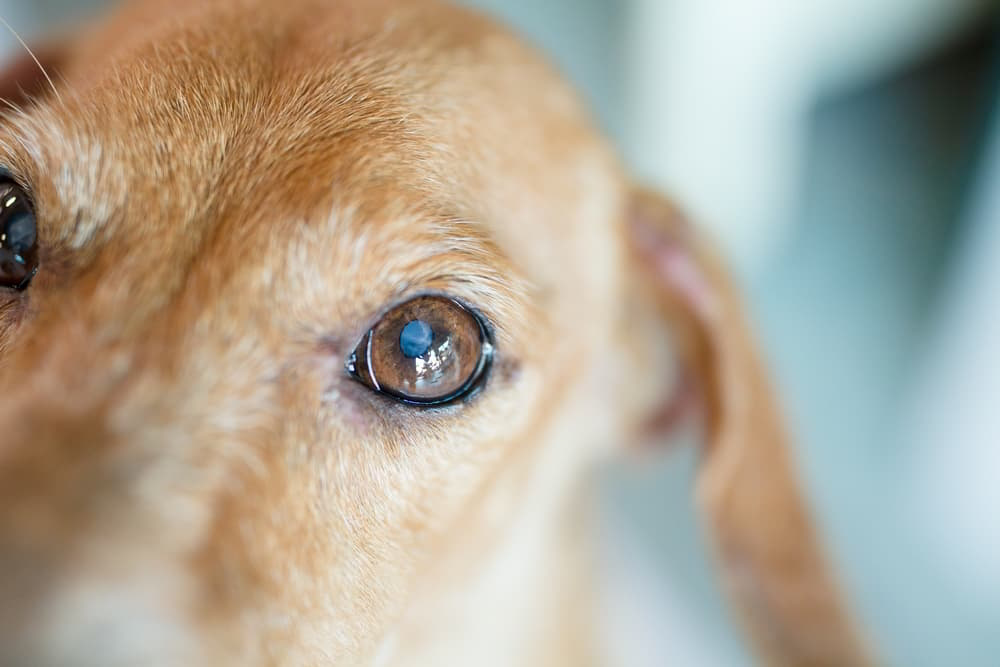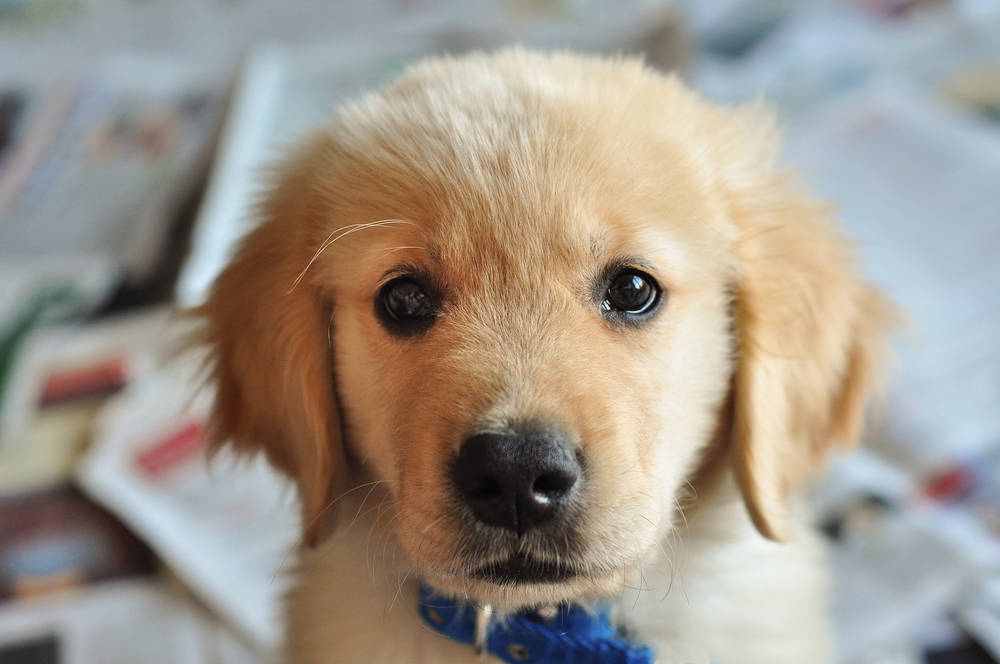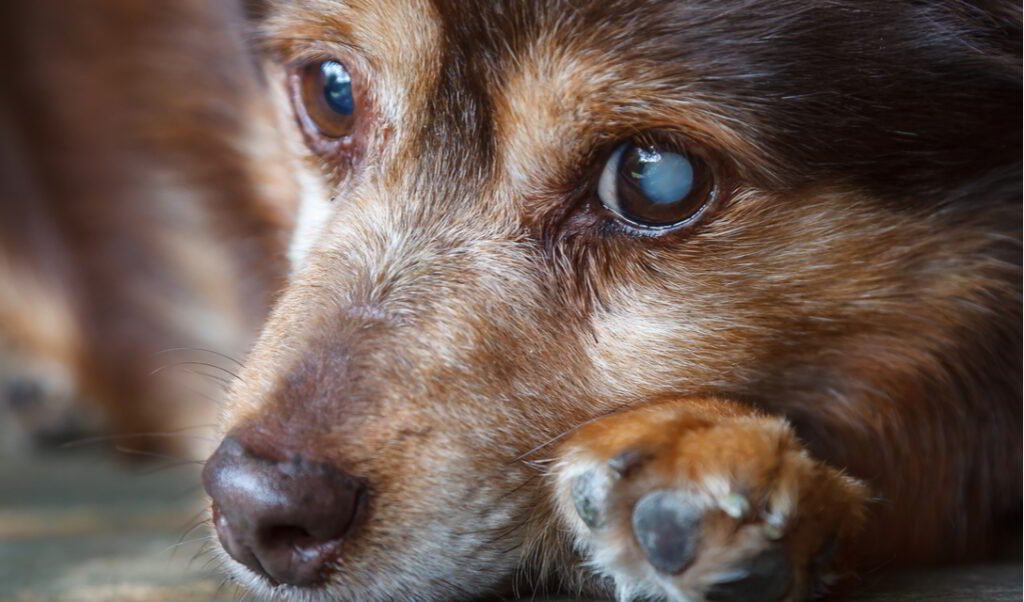Just like humans, dogs can get cataracts. In fact, dogs suffer from juvenile cataracts more commonly than any other species. Although most cases are found in dogs over the age of five, cataracts can develop at any age. Some dogs are born with cataracts or develop them as puppies.
What Are Juvenile Cataracts in Dogs?
A cataract is an opacity of the lens in a dog’s or puppy’s eye. The lens is located directly behind the pupil and can be normally transparent. A cataract interferes with normal vision by keeping adequate light from reaching the retina.
There is no medical treatment that specifically treats cataracts. If the lens becomes completely masked, the result is blindness. Depending on the degree of opacity, you may notice cloudiness within the pupil space that looks like a white-colored marble inside the eye.

Cataracts are often classified by the age of the dog when it develops. Congenital cataracts are present at birth, juvenile cataracts develop during puppyhood, and senile cataracts occur on senior dogs. The degree of the cloudiness of the lens also impacts the classification of the cataract.
Why Do Some Puppies Get Cataracts?
Several things can result in lens changes that become cataracts. Injury, along with the resulting inflammation, may cause a cataract. When that happens, it usually affects only one eye.
Cataracts resulting from poor nutrition are possible but rare because of modern advances in canine diets. In some cases, the cataract is idiopathic, which means the cause cannot be identified.
Dogs often suffer from senile, or “old age,” cataracts. Many dogs older than eight years will develop some degree of cloudiness to the lens of the eye. Cataracts in dogs also may result from diabetes mellitus when the lens protein is injured by metabolic changes.
Puppies born with congenital cataracts can improve as they mature. That’s because the lens inside the puppy’s eye grows along with the dog. When the area of cloudiness on the lens remains the same size, by the time the puppy becomes an adult, the affected portion of the lens is relatively small. A cataract may affect only a portion of the lens and consequently, some dogs show few signs at all.

Most canine cataracts are inherited, especially in certain breeds. Poodles, Cocker Spaniels, Boston Terriers, Karelian Bear Dogs, Wirehaired Fox Terriers, Siberian Huskies, Golden Retrievers, Old English Sheepdogs, and Labrador Retrievers are reported to be affected most often.
Treatment of Juvenile Cataracts in Dogs
Treatment may not be necessary until a high degree of vision is lost and cataracts become come problematic for the pup. By adulthood, many dogs born with cataracts are able to compensate and see “around” the cloudiness. Cataracts that cover the entire lens may still allow some vision, so the pup can “see” around the cloudy portion.
Dogs are experts at making accommodations and relying more on smell sense and hearing to compensate for vision problems. Often, even blind dogs continue to do well in familiar surroundings by relying on their other acute senses.
Lens opacity can vary from a little spot of white to a totally opaque structure that affects the entire lens. If an underlying cause can be identified, it is treated when possible. For example, vets may work to correct nutritional deficiencies that triggered cataracts or treat the inflammation that resulted from an injury to an eye.

The only known effective treatment for cataracts is surgery.
Cataract Surgery for Dogs
When a dog has trouble navigating due to vision loss, the sight could be restored to near normal by surgery. However, this procedure is not indicated when the cataract is caused by inflammation.
The same surgical techniques used on people for cataracts are applied to pets. Most veterinary ophthalmologists in private practice or at a university can do the surgery, which is done under a general anesthetic.
The lens itself is contained in a kind of capsule, like an eggshell. Most commonly, surgery removes the front part of the shell and the contents inside, while leaving the back half of the capsule/shell intact. In some instances, the whole lens is removed and a new lens is transplanted to replace the damaged zoom lens. Dogs that have the surgery generally do quite well.
By Dog Care Tip


0 Comments